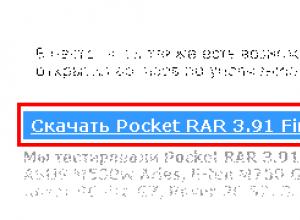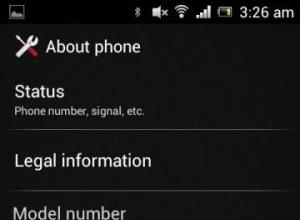How to make a laser and what you need to know for this. How is laser vision correction done? Pros and cons of surgery Why choose this method of vision correction
Sometimes you can make something truly incredible and useful from unnecessary things stored at home. Do you have an old DVD-RW (burner) drive lying around at home? We will tell you how to make a powerful laser at home, borrowing elements from it.
Safety precautions
The device we end up with is not a harmless toy! Before you make a laser, take care of your safety: getting the beam into your eyes is harmful to the retina, especially if the invention is powerful. Therefore, we advise you to carry out all work in special protective glasses, which will save your eyesight if something goes wrong and you accidentally direct the laser beam into your own or a friend’s eyes.
When using the laser in the future, remember these simple safety precautions:
- Do not point the laser beam at flammable or explosive objects.
- Do not shine into reflective surfaces (glass, mirrors).
- Even a laser beam fired from a distance of up to 100 m poses a danger to the retina of humans and animals.
Working with the laser module
The main thing we need is a writing drive. Note that the higher the write speed, the more powerful our DVD laser will be. It goes without saying that after removing the laser module, the equipment will become inoperative, so only disassemble the device that you will no longer need.
Now let's begin:
The first part of our work is behind us. Let's move on to the next important stage.
Assembling the device circuit
We need the circuit in order to control the power of our device. Otherwise, it will simply burn out the first time you use it. You will see a drawing for the laser below.

For our device, wall-mounted installation is quite suitable. Now let's move on to providing power to the laser we made ourselves.

Device power supply
We will need a minimum of 3.7 V. Old batteries from mobile phones and AA batteries can provide this. You just need to connect them in parallel with each other. To check the operation of a device or a stationary laser pointer, a stabilized power supply is suitable.
At this stage, you can already test the operation of the device. Point it at the wall, floor and turn on the power. You should see a tuft of bright reddish color. In the dark it looks like a powerful infrared flashlight.
You see that the glow is far from laser: the beam is too wide; he just begs to be focused. This is what we will do next.
Lens for focusing the laser beam
To adjust the focal length, you can use a lens borrowed from the same DVD-RW drive.

Now reconnect the device to power, directing its light to any surface through this lens. Happened? Then we move on to the final stage of work - placing all the elements in a rigid housing.
Case manufacturing
Many people, when advising on how to make a laser, say that the easiest way is to place the module in the housing of a small flashlight or a Chinese laser pointer. Where, by the way, there is already a lens. But let's look at the situation if you don't have either one or the other at hand.
An alternative is to place the elements in an aluminum profile. It can be easily sawed with a hacksaw and modeled with pliers. You can also add a small AA battery here. The photo below will guide you on how to do this.

Be sure to insulate all contacts. The next step is fixing the lens in the body. The easiest way to attach it is to plasticine - this way you can adjust the most favorable position. In some cases, a better effect is achieved if you turn the lens to the laser diode with the convex side.

Turn on the laser and adjust the clarity of the beam. Once you have achieved satisfactory results, lock the lens into the housing. Then close it entirely, for example, tightly wrapping it with electrical tape.
How to make a laser: an alternative method
We will offer you another, somewhat different way to make a homemade powerful laser. You will need the following:
- DVD-RW drive with a write speed of 16x or more.
- Three AA batteries.
- Capacitors 100 mF and 100 pF.
- Resistor from 2 to 5 Ohms.
- Wires.
- Soldering iron.
- Laser pointer (or any other collimator - this is the name of the module with a lens).
- LED steel lantern.
Now let's see how to make a laser using this method:
- Using the method already described, remove the laser module located in the device carriage from the drive. Don't forget to protect it from static voltage by wrapping the outputs with thin wire or wearing an antistatic wrist strap.
- According to the above diagram, solder the driver - a board that will output our homemade product to the required power. Pay great attention to maintaining polarity so as not to damage the sensitive laser diode.
- At this stage we will check the functionality of the newly assembled driver. If the laser module is from a model with a speed of 16x, then a current of 300-350 mA will be sufficient for it. If higher (up to 22x), then stop at 500 mA.
- Once you have verified the suitability of the driver, you need to place it in the housing. This can be either the base from a Chinese laser pointer with an already built-in lens, or a more suitable size body from an LED flashlight.
Laser testing
And here’s why you were interested in how to make a laser. Let's move on to practical testing of the device. Under no circumstances should you conduct it at home - only on the street, away from fire and explosive objects, buildings, dead wood, heaps of garbage, etc. For the experiments we will need paper, plastic, the same electrical tape, plywood.
So let's begin:
- Place a sheet of paper on the asphalt, stone, brick. Point a well-focused laser beam at it. You will see that after a while the leaf will begin to smoke and then completely catch fire.
- Now let's move on to the plastic - it will also begin to smoke under the influence of the laser beam. We do not recommend carrying out such experiments for a long time: the combustion products of this material are very toxic.
- The most interesting experience was with plywood, a flat board. With a focused laser, you can burn a specific inscription or design onto it.
A home laser is certainly a delicate work and a capricious invention. Therefore, it is quite possible that your craft will soon fail, as certain storage and operating conditions are important for it, which cannot be provided at home. The most powerful lasers, which easily cut metal, can only be obtained in specialized laboratories; naturally, they are not available to amateurs. However, an ordinary device is also very dangerous - aimed from a great distance at the eyes of a person or animal, or at a flammable object nearby.
Hello ladies and gentlemen. Today I am opening a series of articles devoted to high-power lasers, because Habrasearch says that people are looking for such articles. I want to tell you how you can make a fairly powerful laser at home, and also teach you how to use this power not just for the sake of “shine on the clouds.”
Warning!
The article describes the production of a powerful laser (300mW ~ power of 500 Chinese pointers), which can harm your health and the health of others! Be extremely careful! Use special safety glasses and do not point the laser beam at people or animals!
On Habré, articles about portable Dragon Lasers, such as Hulk, appeared only a couple of times. In this article I will tell you how you can make a laser that is not inferior in power to most models sold in this store.
First you need to prepare all the components:
- - a non-working (or working) DVD-RW drive with a write speed of 16x or higher;
- — capacitors 100 pF and 100 mF;
- — resistor 2-5 Ohm;
- — three AAA batteries;
- - soldering iron and wires;
- — collimator (or Chinese pointer);
- — steel LED lamp.
This is the minimum required for making a simple driver model. The driver is, in fact, a board that will output our laser diode to the required power. You should not connect the power source directly to the laser diode - it will break down. The laser diode must be powered with current, not voltage.
A collimator is, in fact, a module with a lens that reduces all radiation into a narrow beam. Ready-made collimators can be purchased at radio stores. These immediately have a convenient place to install a laser diode, and the cost is 200-500 rubles.
You can also use a collimator from a Chinese pointer, however, the laser diode will be difficult to attach, and the collimator body itself will most likely be made of metallized plastic. This means our diode will not cool well. But this is also possible. This option can be found at the end of the article.
First you need to get the laser diode itself. This is a very fragile and small part of our DVD-RW drive - be careful. A powerful red laser diode is located in the carriage of our drive. You can distinguish it from a weak one by its larger radiator than that of a conventional IR diode.
It is recommended to use an antistatic wrist strap as the laser diode is very sensitive to static voltage. If there is no bracelet, then you can wrap the diode leads with thin wire while it waits for installation in the case.
According to this scheme, you need to solder the driver.
Don't mix up the polarity! The laser diode will also fail instantly if the polarity of the supplied power is incorrect.
The diagram shows a 200 mF capacitor, however, for portability, 50-100 mF is quite enough.
Before installing the laser diode and assembling everything into the housing, check the functionality of the driver. Connect another laser diode (non-working or the second one from the drive) and measure the current with a multimeter. Depending on the speed characteristics, the current strength must be chosen correctly. For 16 models, 300-350mA is quite suitable. For the fastest 22x, you can even supply 500mA, but with a completely different driver, the manufacture of which I plan to describe in another article.
Looks terrible, but it works!
Aesthetics.
A laser assembled by weight can only be boasted of in front of the same crazy techno-maniacs, but for beauty and convenience it is better to assemble it in a convenient case. Here it’s better to choose for yourself how you like it. I mounted the entire circuit into a regular LED flashlight. Its dimensions do not exceed 10x4cm. However, I do not recommend carrying it with you: you never know what claims the relevant authorities may make. It is better to store it in a special case so that the sensitive lens does not become dusty.
This is an option with minimal costs - a collimator from a Chinese pointer is used:
Using a factory-made module will allow you to get the following results:
The laser beam is visible in the evening:
And, of course, in the dark:
Maybe.
Yes, in the following articles I want to tell and show how such lasers can be used. How to make much more powerful specimens, capable of cutting metal and wood, and not just lighting matches and melting plastic. How to make holograms and scan objects to create 3D Studio Max models. How to make powerful green or blue lasers. The scope of application of lasers is quite wide, and one article cannot do it here.
Attention! Don't forget about safety precautions! Lasers are not a toy! Take care of your eyes!
Have you ever wanted to make a real laser? In reality, it is not as difficult as it might seem. All you need is a DVD drive and some scrap materials.
Let's figure out how to make a laser at home. What will you need for this?
- DVD drive with rewrite function;
- laser pointer;
- collimator to obtain an even beam of light;
- several screwdrivers;
- stationery knife;
- metal scissors;
- soldering iron
Course of action
We disassemble the DVD drive and remove the top panel from it. You are interested in the location of the carriage because that is where the guides are located. Unscrew the bolts and remove the carriage. Don't forget to disconnect all connectors!
We begin the process of disassembling the carriage. It will have 2 diodes. One is used for reading, the other is used for burning tracks - it is red. We need exactly the latter.
Usually this diode is screwed to the board with bolts, which should be carefully unscrewed with a small screwdriver. Check its functionality by connecting it to a battery. Carefully remove the diode from the housing. We take the purchased collimator and disassemble it. There is a laser diode inside. We remove it, and in its place we put the one that was removed from the drive.

You can use a screwdriver for dismantling. If the element becomes stubborn, you should use a sharp knife. This part should be removed carefully, taking care not to harm other components of the board.
The next step is to install the diode into the housing. It must be glued using heat-resistant glue. It is important to install it in the same position as the previous one. We take a soldering iron and solder the wires to the element, observing polarity.
Now it's time to process the laser pointer. Unscrew the lid and remove the components. The reflector may need modification. Make its edges smooth using a file. Don't forget to remove the plexiglass.
Remove the batteries, and then insert the structure assembled earlier in place of the emitter. Next, we assemble the laser pointer in the reverse order, but without using the plastic lens.

Finishing touches
Now you need to return the batteries to their original place and check the created device. Never point the laser at yourself or people or animals around you. It is not very powerful, but it will easily melt a plastic bag or other material of similar thickness. The length of the beam will exceed 100 m, with its help you can light a match at such a distance.
It is not difficult to assemble a laser with your own hands; you do not need any special tools or things for this. It is important not to forget that this thing is not applicable as a toy. It is dangerous to point it at mirrors or other reflective surfaces. If you like to experiment, then this is a great way to create an interesting thing.
Man has learned many technical inventions by observing natural phenomena, analyzing them and applying the acquired knowledge in the surrounding reality. This is how man gained the ability to kindle fire, created a wheel, learned to generate electricity, and gained control over the nuclear reaction.
Unlike all these inventions, the laser has no analogues in nature. Its emergence was associated exclusively with theoretical assumptions within the framework of the emerging quantum physics. The existence of the principle that formed the basis of the laser was predicted at the beginning of the twentieth century by the greatest scientist Albert Einstein.
The word “laser” appeared as a result of the reduction of five words describing the essence of a physical process to the first letters. In Russian, this process is called “light amplification by stimulated emission.”
By its operating principle, a laser is a quantum photon generator. The essence of the phenomenon underlying it is that, under the influence of energy in the form of a photon, an atom emits another photon, which is identical to the first one in the direction of movement, its phase and polarization. As a result, the emitted light is enhanced.
This phenomenon is impossible under conditions of thermodynamic equilibrium. To create induced radiation, various methods are used: electrical, chemical, gas and others. Lasers used in domestic conditions (laser disk drives, laser printers) use semiconductor method stimulation of radiation under the influence of electric current.
 The principle of operation is that air flows through the heater into the hot air gun tube and, having reached the set temperatures, enters the part being soldered through special nozzles.
The principle of operation is that air flows through the heater into the hot air gun tube and, having reached the set temperatures, enters the part being soldered through special nozzles.
If malfunctions occur, the welding inverter can be repaired with your own hands. Repair tips can be read.
In addition, a necessary component of any full-fledged laser is optical resonator, the function of which is to amplify a beam of light by reflecting it multiple times. For this purpose, laser systems use mirrors.
It should be said that creating a real powerful laser with your own hands at home is unrealistic. To do this, you need to have special knowledge, carry out complex calculations, and have a good material and technical base.For example, laser machines that can cut metal get extremely hot and require extreme cooling measures, including the use of liquid nitrogen. In addition, devices operating on the basis of the quantum principle are extremely capricious, require the finest tuning and do not tolerate even the slightest deviations from the required parameters.
Required components for assembly
 To assemble a laser circuit with your own hands you will need:
To assemble a laser circuit with your own hands you will need:
- DVD-ROM with rewritable (RW) function. It contains a red laser diode with a power of 300 mW. You can use laser diodes from BLU-RAY-ROM-RW - they emit violet light with a power of 150 mW. For our purposes, the best ROMs are those that have faster write speeds: they are more powerful.
- Pulse NCP1529. The converter produces a current of 1A, stabilizes the voltage in the range of 0.9-3.9 V. These indicators are ideal for our laser diode, which requires a constant voltage of 3 V.
- Collimator for obtaining an even beam of light. There are now numerous laser modules on sale from various manufacturers, including collimators.
- Output lens from ROM.
- A housing, for example, from a laser pointer or flashlight.
- Wires.
- Batteries 3.6 V.
To connect the parts you will need. In addition, you will need a screwdriver and tweezers.
How to make a laser from a disk drive?
The assembly procedure for a simple laser consists of the following steps.

 It's not at all difficult to do. The difference is in the number of contacts. In a pass-through switch, unlike a simple one, there are three contacts instead of two.
It's not at all difficult to do. The difference is in the number of contacts. In a pass-through switch, unlike a simple one, there are three contacts instead of two.
This way you can assemble the simplest laser. What can such a homemade “light amplifier” do:
- Light a match from a distance.
- Melt plastic bags and tissue paper.
- Emit a beam over a distance of more than 100 meters.
Therefore, you need to use such a device carefully: do not shine it into reflective surfaces (mirrors, glass, reflectors) and in general be extremely careful - the beam can cause harm if it hits the eye even from a distance of one hundred meters.
DIY laser on video
Latest site materials
Programs

Windows Mobile Archive Installing a new receiver
Installing and uninstalling programs on Windows Mobile is a fairly simple operation, but sometimes people who have not previously used communicators with this operating system have difficulty installing new and removing unnecessary software.
Windows 8

Ratings - 8, average score: 3.6 () LG operating instructions, model LGP705 There are also other instructions for this device: Instruction fragment 1 In the mode of viewing pictures or video clips using the Gallery application, touch to select a file
Error correction programs
Windows 8

The Windows Troubleshooting Wizard is a built-in utility that is responsible for fixing problems with the operating system. Using this program you can “fix” Windows Update, software errors in USB inputs, Wi-Fi adapter failures, and much more.
How to create a virtual phone number
Computer

We've released a new book, Social Media Content Marketing: How to Get Inside Your Followers' Heads and Make Them Fall in Love with Your Brand.
Most web services and social networks require the user to provide a phone number when registering. From point of view
Windows 8

Microphones for passing exams: types, photos, reviews
Hidden headphones Would you like to buy a hidden earphone in an online store? Then you have come to the right place, as we always offer popular models at a reasonable price. These headphones are distinguished by a progressive approach in which transmission and
